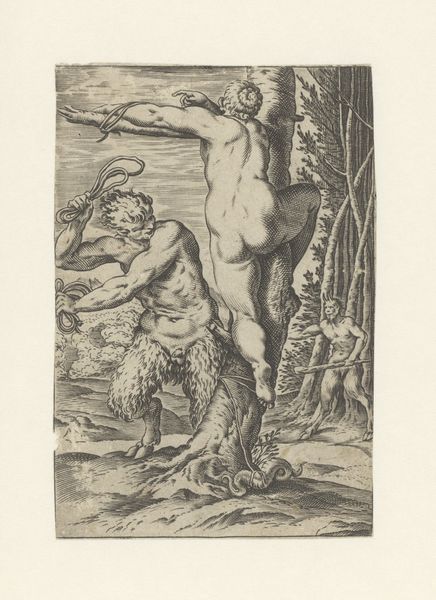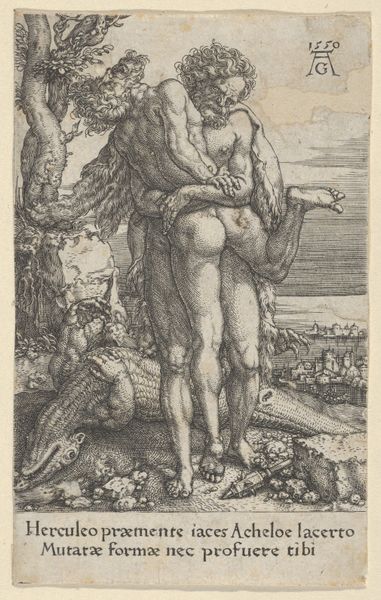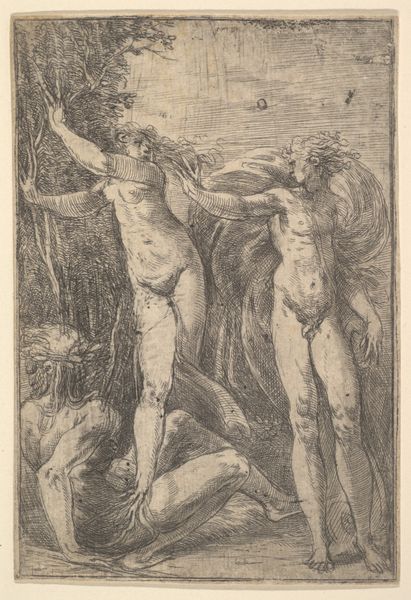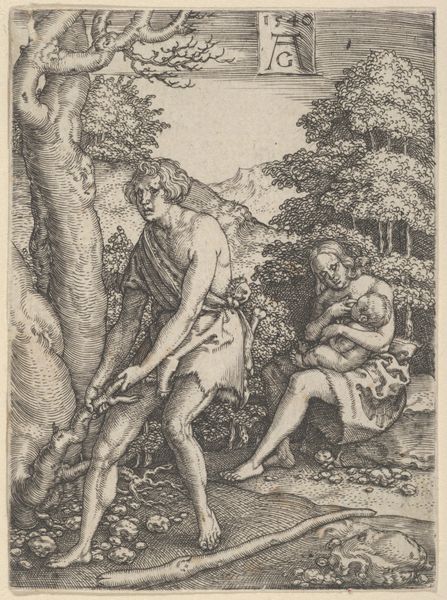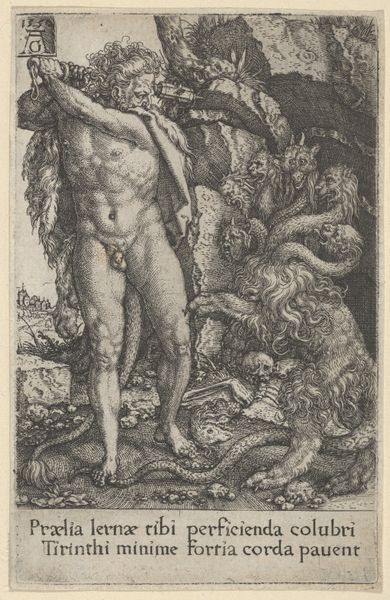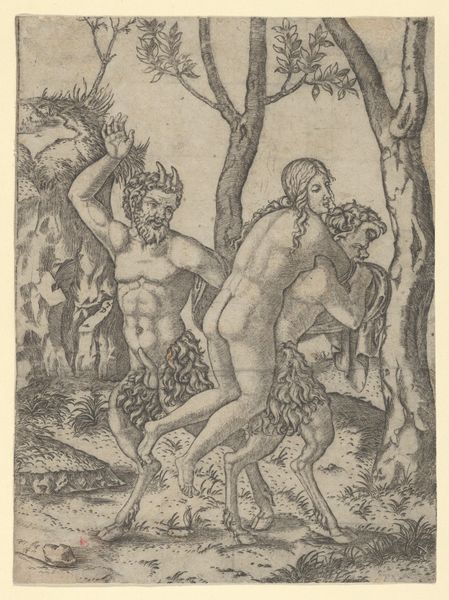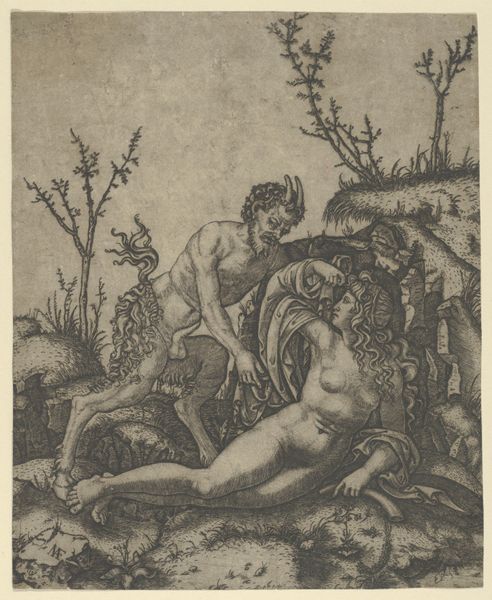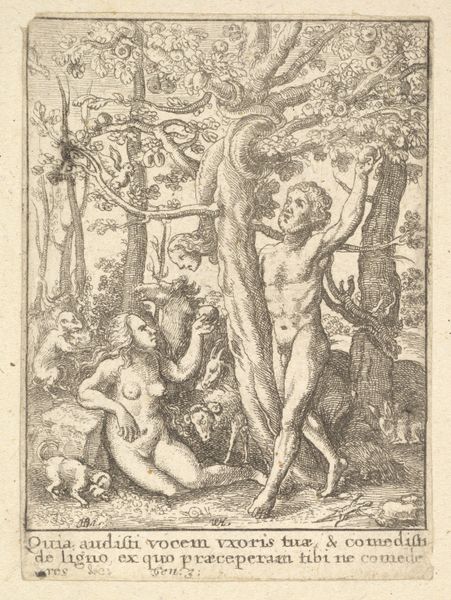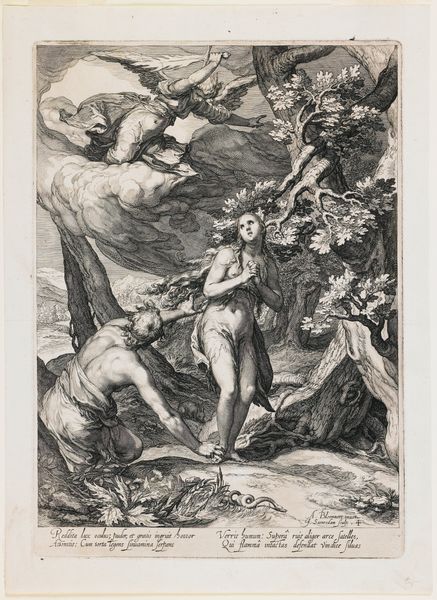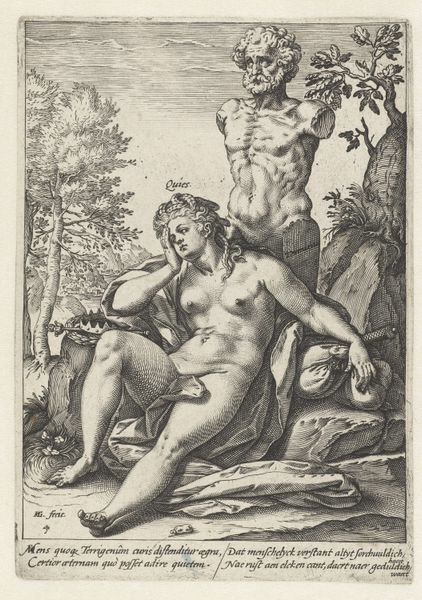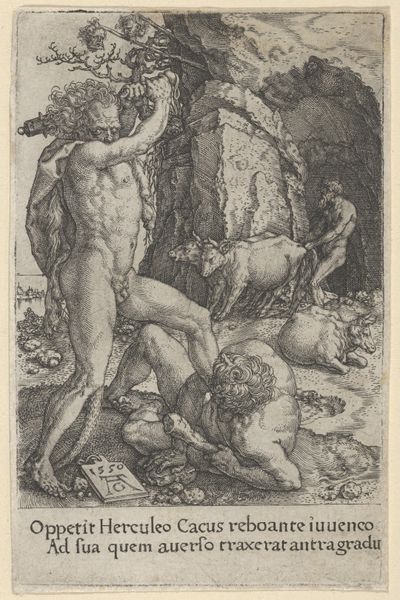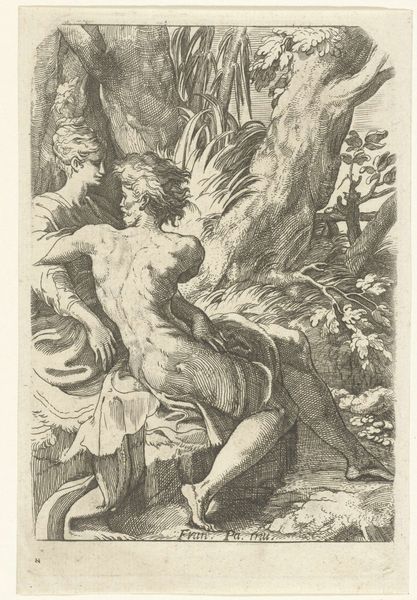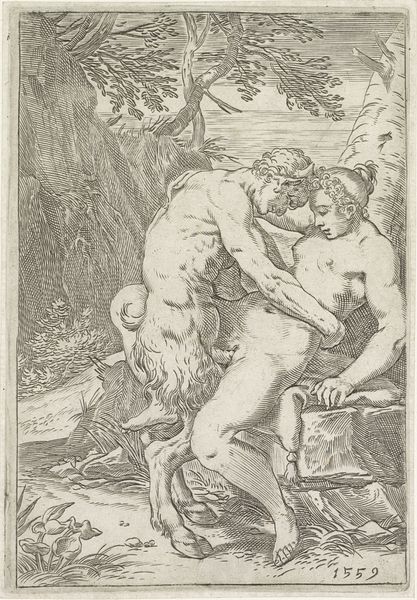
Satyr whipping a nymph, who is shown from behind and bound to a tree, a second satyr bearing a club stands in the middle ground 1590 - 1595
0:00
0:00
drawing, print, etching, intaglio, engraving
#
drawing
#
ink drawing
#
allegory
#
baroque
#
pen drawing
# print
#
etching
#
intaglio
#
mannerism
#
figuration
#
history-painting
#
nude
#
engraving
#
erotic-art
Dimensions: sheet: 5 15/16 x 4 5/16 in. (15.1 x 11 cm)
Copyright: Public Domain
Curator: This is an etching by Agostino Carracci, made between 1590 and 1595, titled “Satyr whipping a nymph, who is shown from behind and bound to a tree, a second satyr bearing a club stands in the middle ground”. Editor: Well, my immediate response is a visceral one. There's an energy here that’s unsettling, mostly due to the aggressive use of line work. The texture on the Satyr's furry lower body, and the implied violence – it's raw. Curator: I think that raw quality reflects a certain Mannerist influence which then gives way to some early Baroque sensibilities; we see that theatricality Carracci and his contemporaries were cultivating in their efforts to engage viewers emotionally. Editor: Yes, and let's not ignore the labor involved in creating such a detailed print. Each line, each gradation, speaks to the artisan's skill and the deliberate act of production, made for distribution in multiples. Was it intended to titillate a wealthy male audience, furthering particular power structures? Curator: Possibly. Carracci certainly worked within the patronage system of his time, often catering to the tastes of the elite. Representations of nymphs and satyrs had a long tradition, becoming almost allegorical for ideas of unrestrained desire, or even representing moral conflict. Editor: The very materials tell a story—the ink, the paper, the plates... all commodities produced and distributed within specific social and economic contexts. Even the act of viewing it then and now connects us to that history of material production. Curator: Absolutely. It is a potent reminder of the role art played—and continues to play—in constructing and reinforcing certain cultural narratives. Editor: It makes you think about the labor conditions too, of those creating the ink, processing the paper, who are now largely invisible in the account of its provenance. It pushes you to reconsider that this art did not just arise, but came to be through particular working conditions and a specialized social division of labor. Curator: Exactly, and to be aware of the complex power dynamics that underlie what might appear as mere artistic expression. It reveals itself in ways you don't expect once you start digging into the artwork. Editor: It also emphasizes how our present interpretation can contribute to, or disrupt, those original meanings embedded in both image and materials. Thank you.
Comments
No comments
Be the first to comment and join the conversation on the ultimate creative platform.
